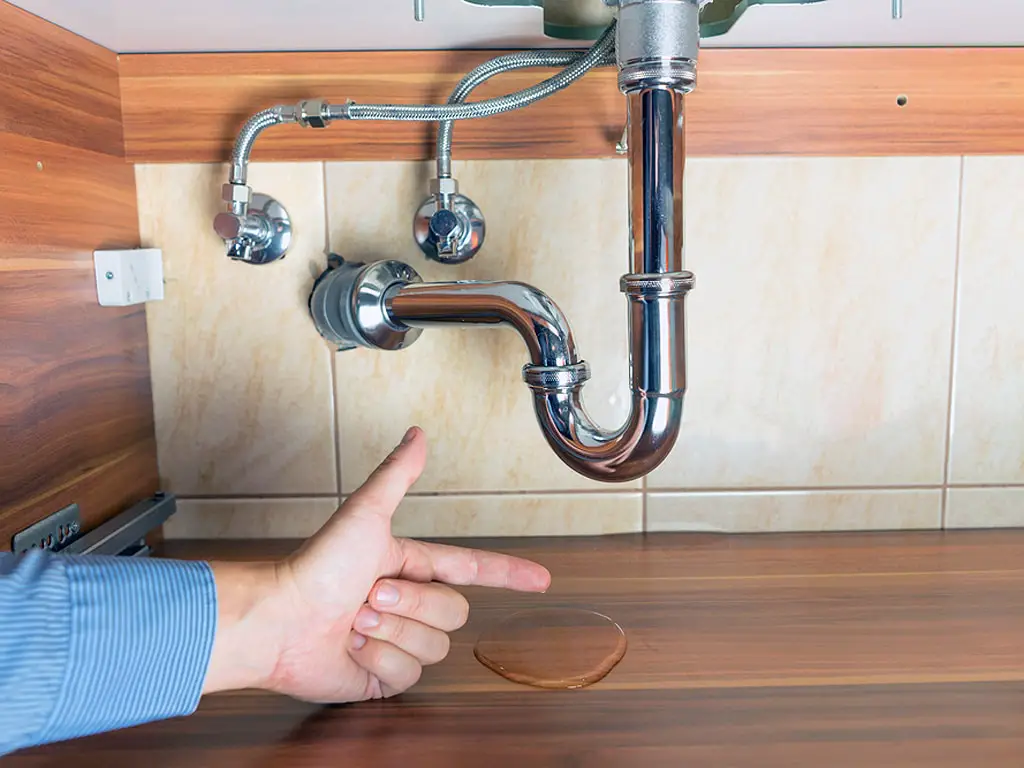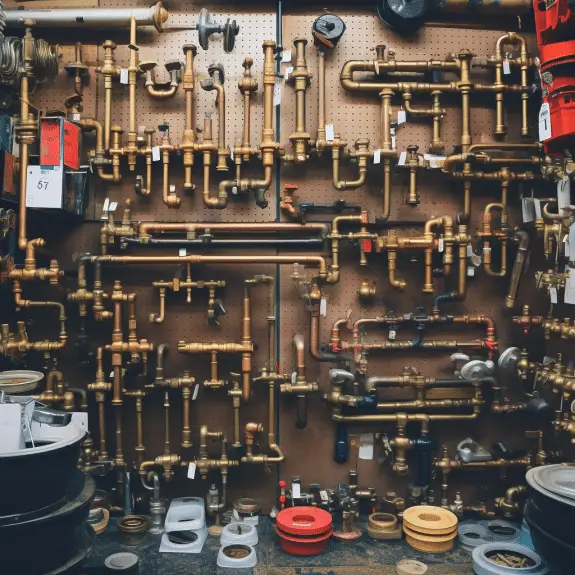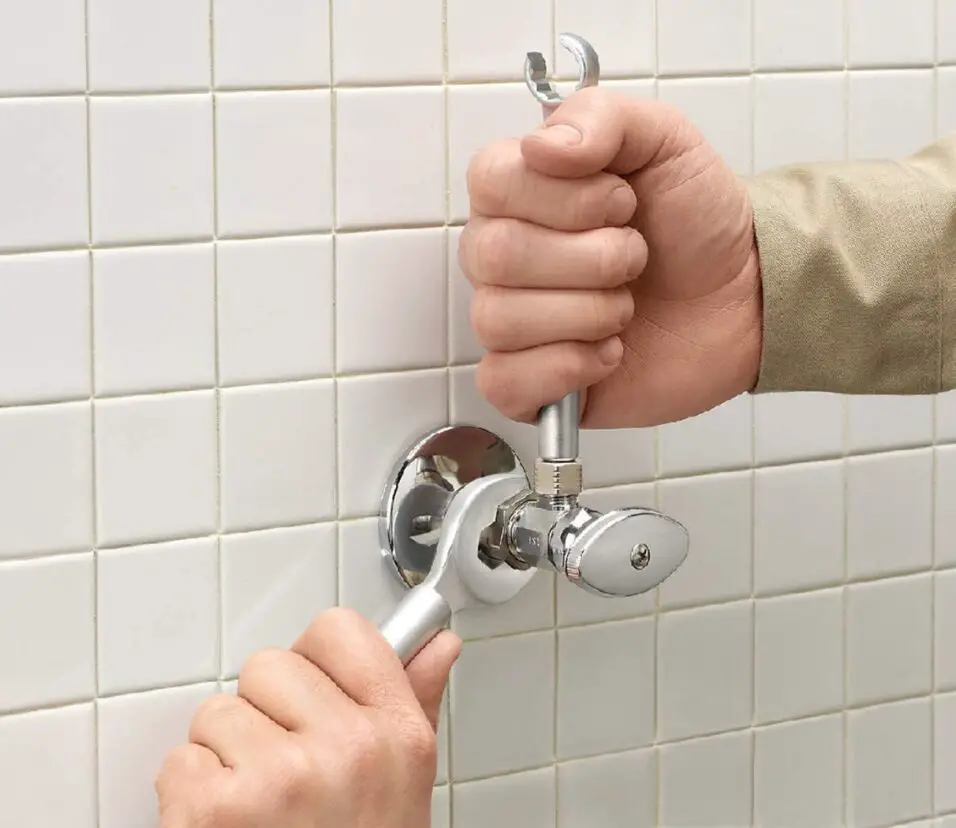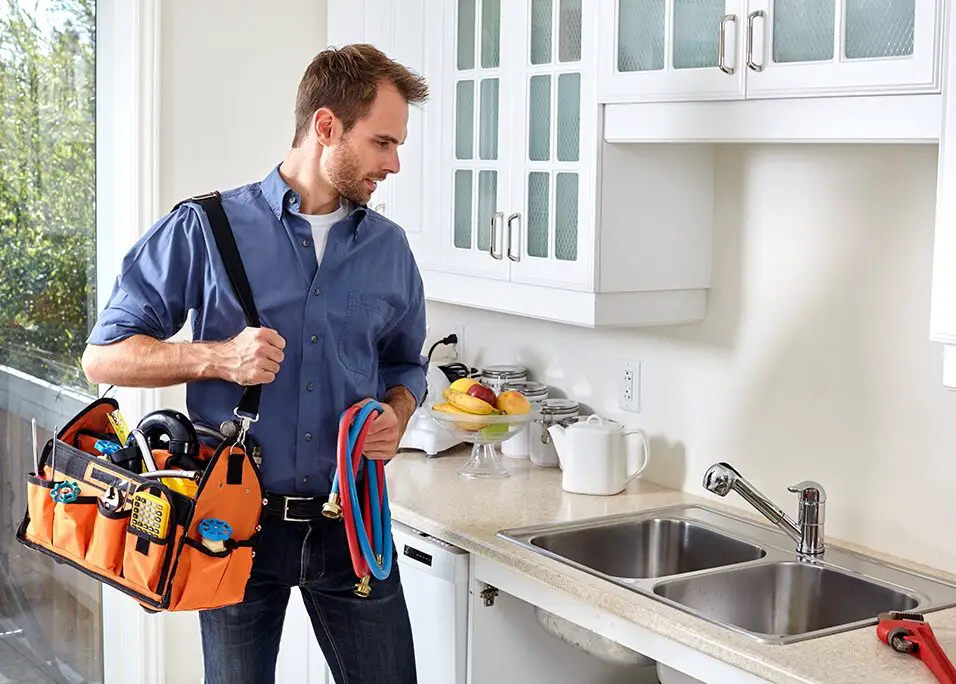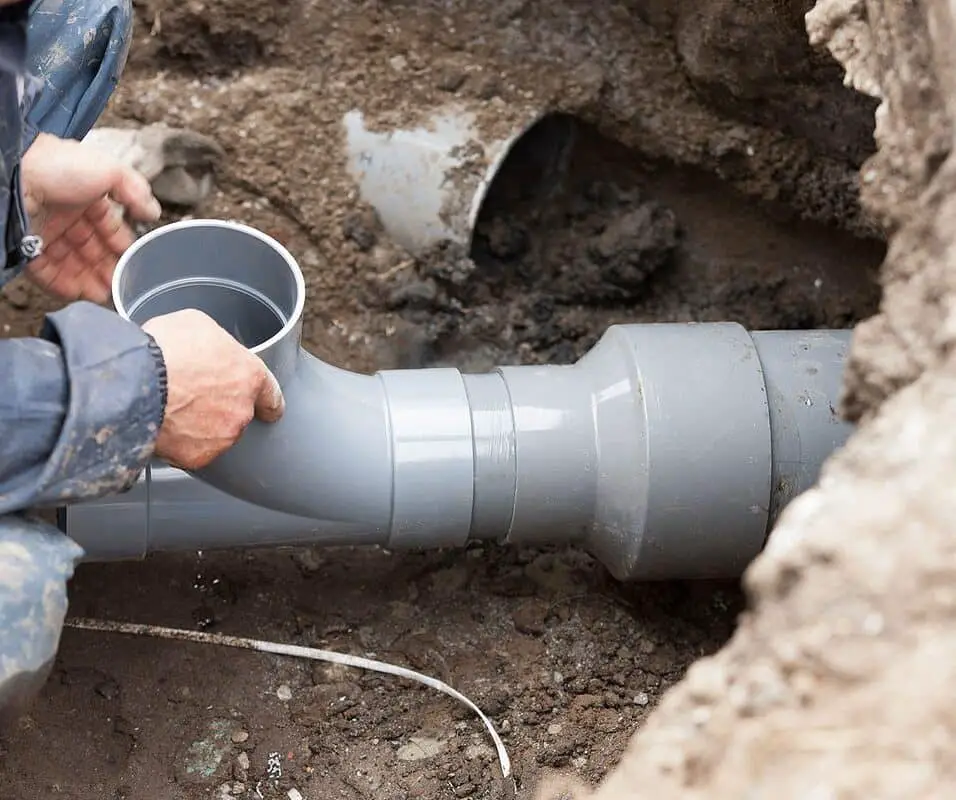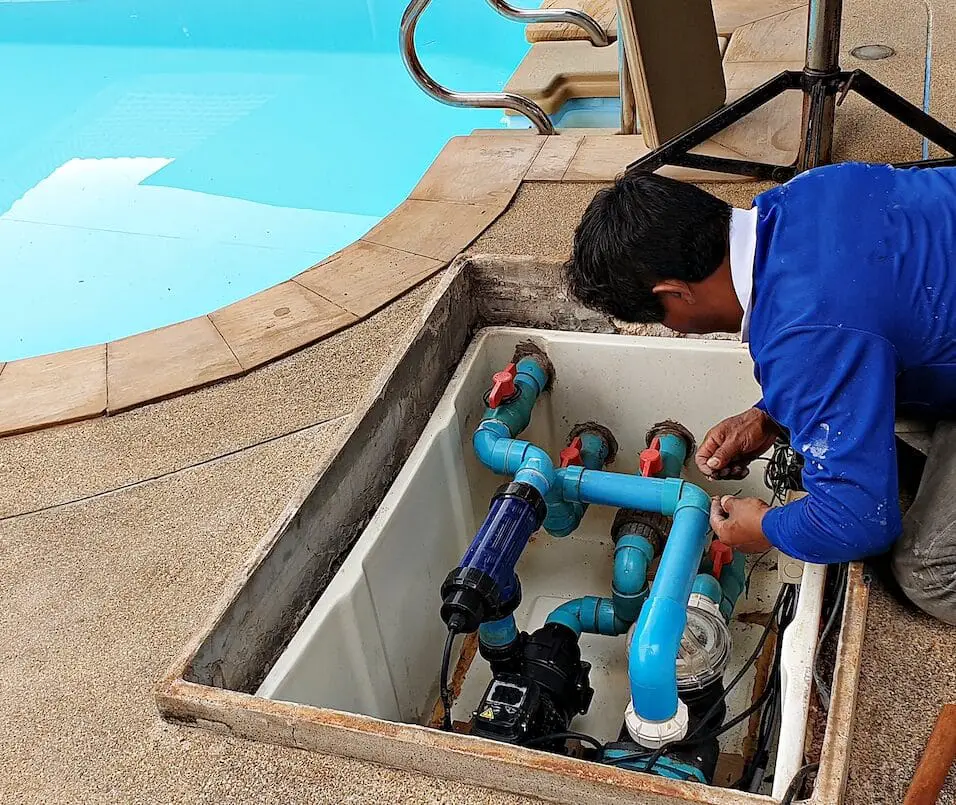How To Install Double Kitchen Sink Plumbing
Introduction
Installing a double kitchen sink plumbing system is a task that requires careful planning and precise execution. A well-installed plumbing system is crucial for the smooth operation of your new kitchen or the replacement of an old sink.
Before beginning the installation, it’s crucial to gather all the necessary tools and materials. These may include a double sink kit, PVC pipes, plumber’s putty, pipe cutters, adjustable wrenches, and a pipe wrench. Once you have everything ready, it’s time to prepare the workspace and shut off the water supply to the kitchen. With proper planning and careful execution, you can successfully install a double kitchen sink plumbing system that will enhance the functionality and aesthetics of your kitchen.
The installation process typically involves removing the old sink and indoor plumbing components, preparing the new sinks for installation, and connecting the drain and water supply lines. Proper alignment, sealing, and securing of the pipes are crucial steps to prevent leaks and ensure smooth water flow.
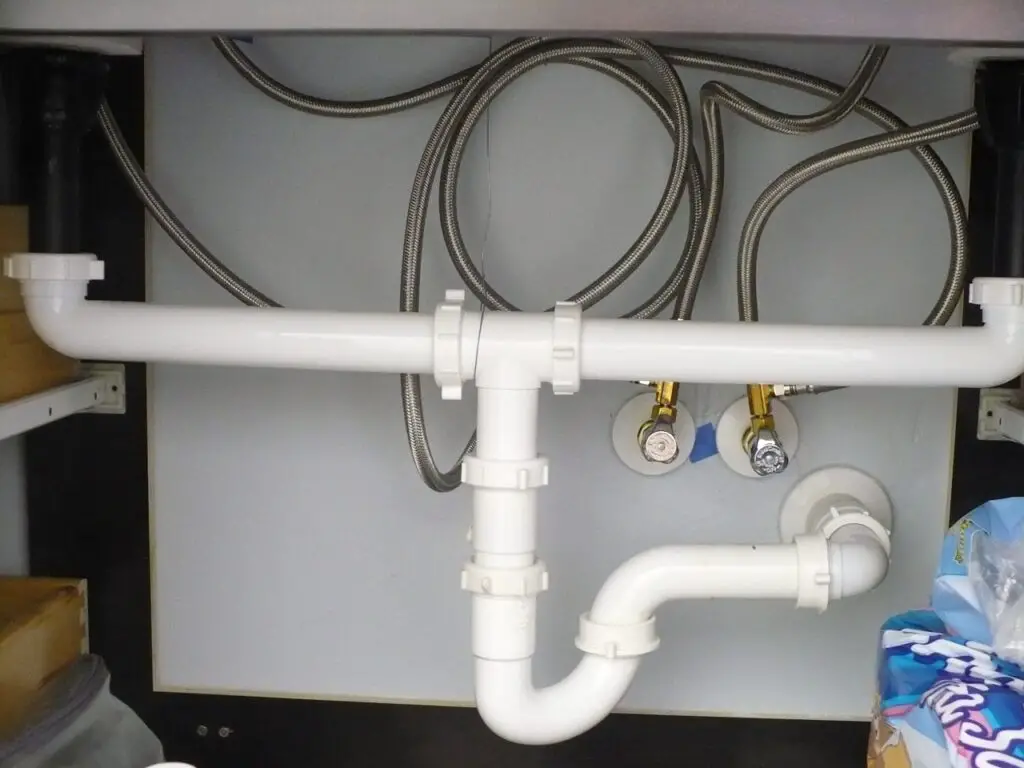
How Do You Install A Double Sink In A Kitchen?
Instructions
- Install Sink Strainers. Sink basket strainers consist of the drain and strainer basket that sits in the bottom of the sink.
- Put the Sink in Place.
- Measure the Drain Outlet Height.
- Connect the Drain Tailpieces.
- Add in the Sanitary Tee.
- Install the Drain Trap.
- Mount the Faucet.
- Connect the Hot and Cold Water Lines.
Installing a double sink in a kitchen can be a practical and convenient addition for many homeowners. It provides the flexibility of having separate spaces for food preparation and cleaning, allowing multiple people to work efficiently in the kitchen. Here’s a step-by-step guide on how to install a double sink:
Gather the necessary tools and materials
You’ll need a double sink kit, adjustable wrench, plumber’s putty, silicone caulk, a hacksaw, and plumbing supplies like pipes, fittings, and P-traps.
Turn off the water supply
Locate the shut-off valves under the sink or at the main water supply and turn them off to stop the water flow.
Remove the existing sink
Disconnect the plumbing connections, including the drain pipes and water supply lines. Use a wrench to loosen the nuts securing the sink to the countertop. Carefully lift the sink out and clean the area thoroughly.
Prepare the countertop
Measure and mark the location for the double sink. Using a template provided with the sink kit, trace the outline of the sinks on the countertop. Use a jigsaw to carefully cut along the marked lines.
Install the new sinks
Apply plumber’s putty or silicone caulk around the edges of the sink cutouts. Lower the sinks into the holes, ensuring they are centered and level. Secure the sinks to the countertop with mounting clips or brackets provided with the sink kit.
Does A Double Sink Need Two Water Lines?
Yes, you need one water pipe for each sink. If you do not have two water pipes, we advise you to contact a plumbing service.
Double sink typically requires two water lines to provide water to each individual sink. Each sink in a double sink setup is designed to function independently, allowing separate use for various tasks simultaneously. Here’s why a double sink needs two water lines:
Convenience and functionality
Having two water lines ensures that each sink has its own water supply, enabling multiple people to use the sinks simultaneously. This is particularly useful when cooking, as one sink can be used for food preparation, such as washing vegetables, while the other can be used for dishwashing or filling pots with water.
Avoiding cross-contamination
With separate water lines, you can maintain proper hygiene and prevent cross-contamination. For example, if one sink is used for washing raw meat or handling chemicals, you can keep the other sink clean for rinsing vegetables or washing dishes without the risk of contamination.
Efficient workflow
A double sink with two water lines promotes efficient workflow in the kitchen. It allows for seamless multitasking, where one sink can be dedicated to specific tasks like soaking dishes or filling large pots, while the other sink remains available for quick rinsing or food prep.
Individual control
With two water lines, you have separate control over the water flow and temperature for each sink. This enables customization and convenience based on your specific needs and preferences.
When installing a double sink, it is essential to ensure that both sinks have their own dedicated water lines to maximize functionality and provide efficient water supply to each sink. This helps optimize the use of your kitchen space and enhances your overall kitchen experience.
Why Use Double Sink In Kitchen?
Some of the benefits of a double-bowl sink are: It’s ideal for washing large pans and other items that you don’t want to run through the dishwasher. It helps keep things organized. For instance, you can put dirty dishes in one bowl while you use the other for food preparation.
Using a double sink in the kitchen offers several benefits that can enhance functionality, efficiency, and convenience. Here are some reasons why people choose to use a double sink in their kitchen:
Increased productivity
A double sink allows multiple people to work simultaneously in the kitchen. One sink can be used for food preparation tasks like washing vegetables or peeling fruits, while the other sink can be designated for cleaning dishes or filling pots with water. This arrangement minimizes wait times and maximizes productivity, especially in busy households or during meal preparation.
Enhanced organization and cleanliness
With two separate sinks, you can keep your kitchen more organized and clean. You can allocate specific tasks to each sink, such as keeping one sink dedicated solely to dirty dishes, reducing clutter and minimizing the chances of cross-contamination. This division of tasks promotes a cleaner and more efficient work environment.
Efficient workflow
Double sinks facilitate a smooth workflow by providing dedicated spaces for various kitchen activities. For instance, you can use one sink for prepping ingredients and another for washing utensils, ensuring a seamless and organized process. This arrangement saves time and effort by eliminating the need to continuously clean and clear one sink before starting the next task.
Flexibility and versatility
Having two sinks grants greater flexibility in managing different kitchen tasks. You can utilize one sink for traditional kitchen activities, while the other can serve as a secondary sink for specialized purposes, such as a bar sink for beverage preparation or a sink for pet care. This versatility allows for a more customized and adaptable kitchen space.
Is A Double Sink A Good Idea?
The double-bowl kitchen sink isn’t just for washing and rinsing dishes. It allows you to accomplish many everyday kitchen jobs with ease and efficiency. Let potatoes soak on one side, while filling up a pot on the other. On a busy weekday evening, defrost a ready-made meal and clean the breakfast dishes simultaneously.
Yes, a double sink can be a good idea for many households. Here are some reasons why a double sink is considered beneficial:
Increased functionality
A double sink provides additional functionality and versatility in the kitchen. Since it can be used by numerous individuals at once, or by a single person to complete several jobs simultaneously, it facilitates teamwork.One sink can be used for prepping food like washing vegetables, while the other is used for washing dishes or heating water.
Efficient workflow
With a double sink, you can streamline your kitchen workflow. By separating tasks between the two sinks, you can maintain an organized and efficient space. This arrangement minimizes the need to clean and clear one sink before starting the next task, saving time and effort in the process.
Enhanced cleanliness and organization
The division of tasks in a double sink promotes cleanliness and organization in the kitchen. You can dedicate one sink solely for dirty dishes, reducing clutter and minimizing the risk of cross-contamination. This separation helps maintain a cleaner and more hygienic environment.
Flexibility and customization
A double sink offers flexibility and customization options. You can choose different sink sizes, depths, and configurations to suit your specific needs and kitchen layout. Additionally, some double sinks come with accessories like cutting boards and colanders that fit into the sink, further enhancing their functionality.
Resale value
Installing a double sink can potentially increase the resale value of your home. Many homebuyers consider a double sink to be a desirable feature in a kitchen due to its practicality and convenience.
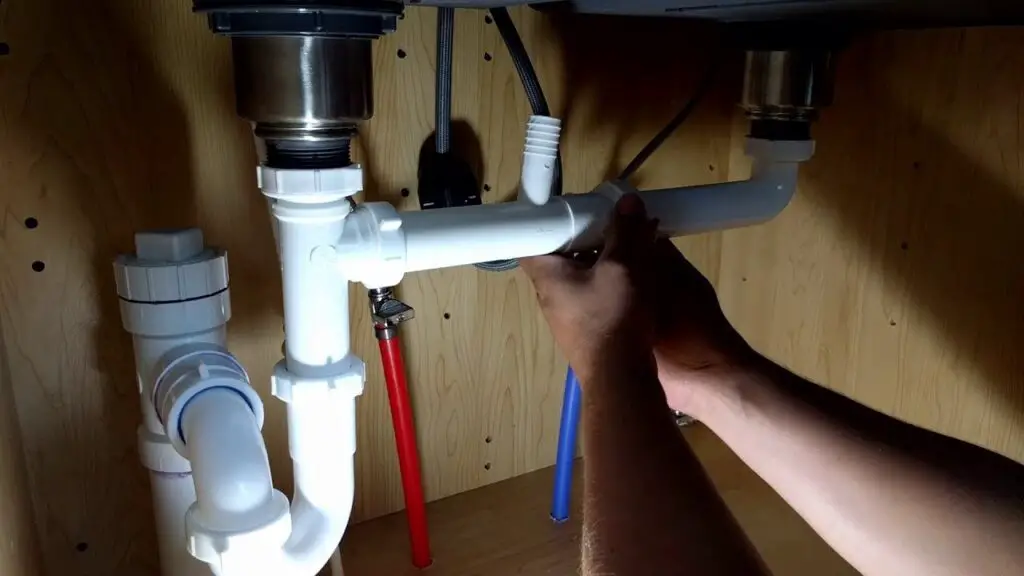
Are Double Sinks Connected?
Even though each sink has its own drain, they do join. One drains into the trash disposal, and the other has its own drain. But they meet at the main line of drains. If water is filling up both sides of your sink, it’s likely because there’s a clog in the main drain line or P-trap.
There are a few ways to connect two sinks, but it all depends on how the plumbing is set up. Most double sinks are hooked up to the main water system and use the same drain line. The most common ways to link two sinks together are as follows:
In homes with more than one sink, it’s usual for both sinks to be connected to the same drain pipe.
Individual drain lines: Some double sinks have separate drain lines that link to the main plumbing system on their own. This setup gives you more options for how to drain water, and it may be better in some settings.
Trap configuration: Most double sinks share a single trap, which is a curved piece of pipe that runs under the sinks. A small amount of water is kept in the trap to keep sewer gas from getting into the living area. Both sinks are hooked up to the trap, which is then hooked up to the drain pipe.
Venting: Double sinks also need proper venting to keep the plumbing system’s air pressure in balance. Vent pipes are usually put in place to give air a way to get into and out of the system. Depending on how the plumbing is set up, these vent pipes may be shared or they may be different for each sink.
What Is The Standard Distance Between Double Sinks?
Measuring from one center line to the next center line, install two basins at a minimum distance of 36 inches apart. This is the suggested bare minimum distance to enable simultaneous use of both sinks by users. Additionally, the gap leaves enough area for the plumbing beneath the sink.
The typical distance between two sinks might change depending on the size of the sinks, the amount of countertop space available, and individual preferences. But a general rule of thumb is to leave at least 30 to 36 inches (76 to 91 cm) between the centers of the two sinks. This size makes sure that each sink has enough space to be used without feeling crowded.
What Is Double Kitchen Sink Plumbing?
When you install plumbing for a double kitchen sink, you link both sinks to the main drain line. Two sinks can be used at the same time, which makes the kitchen much more efficient.
The lines, drains, and fixtures for two kitchen sinks are all part of the plumbing for a double kitchen sink. To make sure that both sinks drain and get water properly, the parts must be set up and connected.
The plumbing for a standard double kitchen sink has drain lines, P-traps, and a central waste pipe. Each sink has a drain line that leads to a P-trap, which is a curved pipe that collects water and keeps sewer gases out of the kitchen. The P-trap is connected to a central drain line that takes wastewater out of the house.
As well as drain pipes, the plumbing for a double kitchen sink has lines for both hot and cold water. These lines bring water from the mains to each sink. The supply lines connect to the valves on the faucets or to a single valve that controls the flow of water to both sinks.
Vent lines let air into the drainage system. This lessens the suction and makes drainage smooth. With good airflow, you can avoid giggling, clogged drains, and bad smells in the kitchen.
Can I Install Double Kitchen Sink Plumbing On My Own?
Yes, if you have some plumbing knowledge and experience, you can install double kitchen sink plumbing as a do-it-yourself project.
It is recommended that you engage a professional plumber to install your double kitchen sink because doing yourself can be difficult. Despite the fact that some DIY enthusiasts may have the ability to undertake this project, it is crucial to examine numerous things before tackling it on your own, even though they may have the requisite skills.
Double kitchen sink plumbing involves knowledge of plumbing codes and regulations. These codes vary by location and dictate specific requirements for pipe sizing, venting, and drainage. A professional plumber will have the expertise to navigate these regulations and ensure compliance with local standards.
Installing plumbing requires a range of specialized tools and materials. If you do not already have the necessary equipment, purchasing or renting them can add to the overall cost of the project. A professional plumber will already have the required tools and materials, saving you time and money.
Improper installation can lead to leaks, water damage, and other plumbing issues. A professional plumber has the expertise and experience to correctly connect pipes, create proper seals, and ensure that the system is functioning efficiently and without leaks.
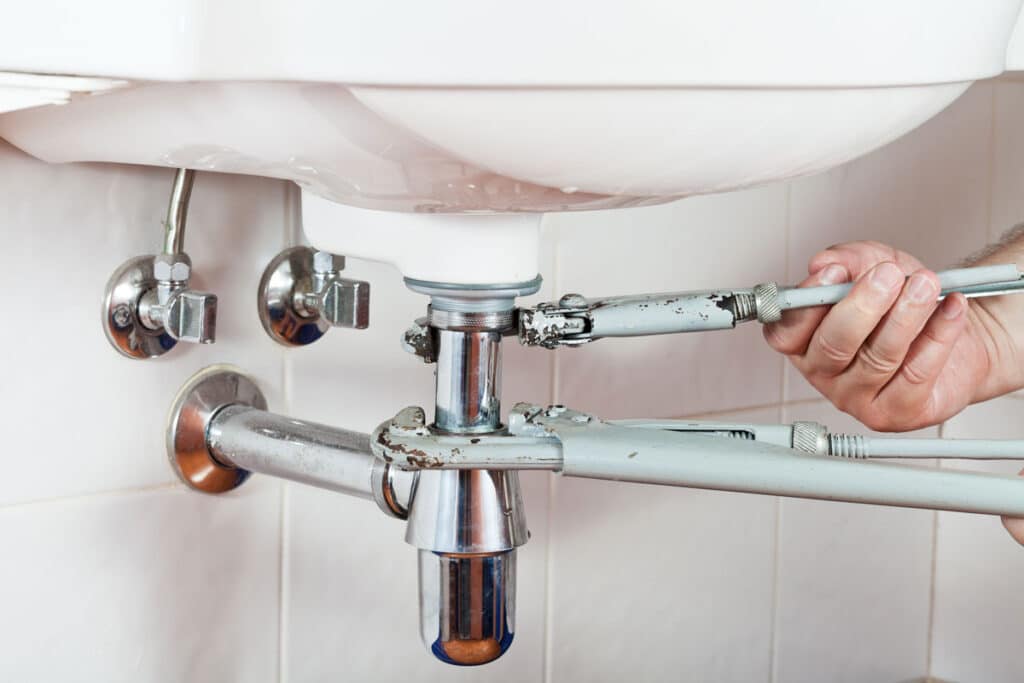
Conclusion
Installing a double kitchen sink plumbing system is a task that may seem daunting at first, but with the right knowledge and guidance, it can be accomplished successfully. By following the step-by-step instructions outlined in this guide, you can ensure a properly installed and efficient plumbing system for your double kitchen sink.
Throughout the installation process, the importance of careful planning, gathering the necessary tools and materials, and adhering to proper alignment, sealing, and securing of the pipes. These steps are crucial in preventing leaks and ensuring smooth water flow.
By understanding the layout of your kitchen plumbing system and carefully connecting the drain and water supply lines, you can avoid potential issues and save yourself from costly repairs in the future. It’s also essential to use quality materials and follow local plumbing codes and regulations to ensure the longevity and safety of your installation.With the proper preparation, patience, and attention to detail, you can successfully install a double kitchen sink plumbing system that meets your functional and aesthetic requirements.



